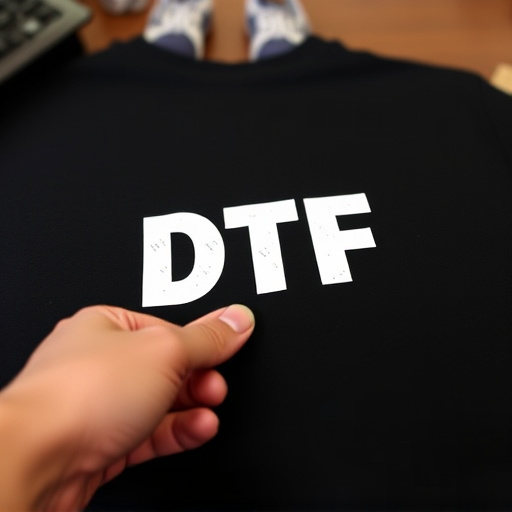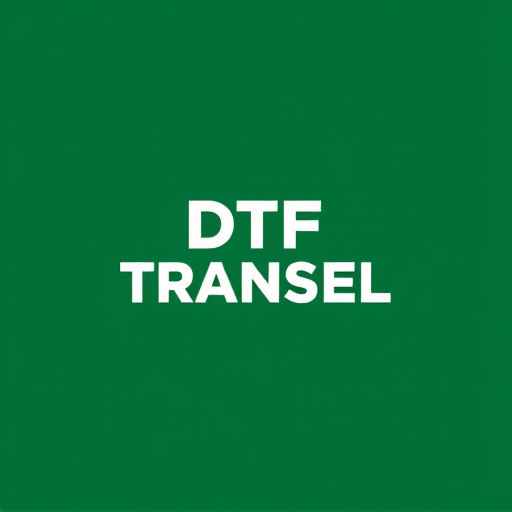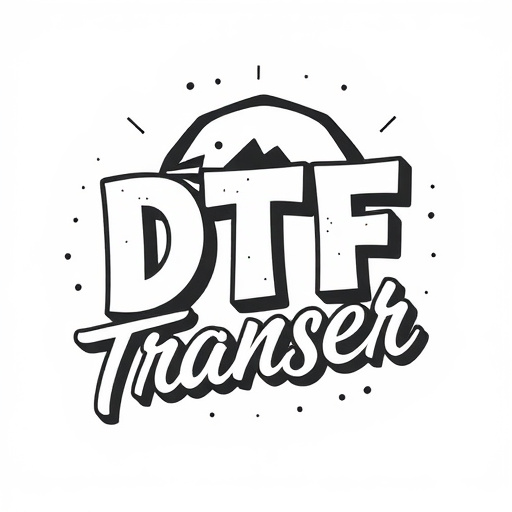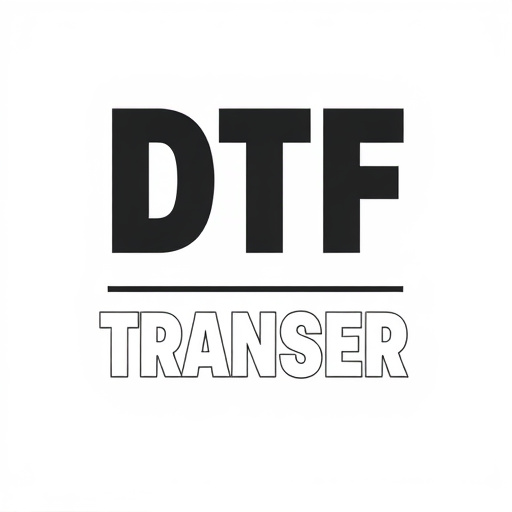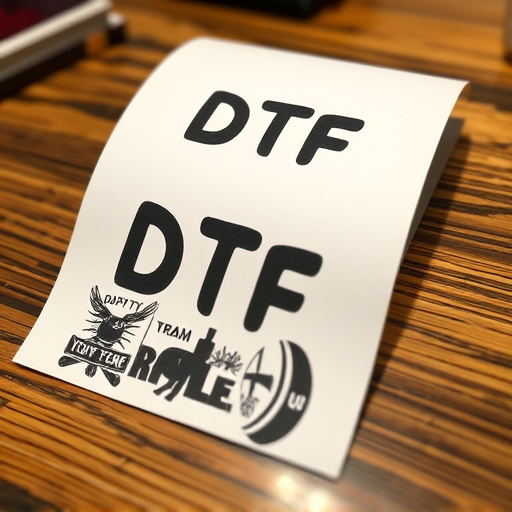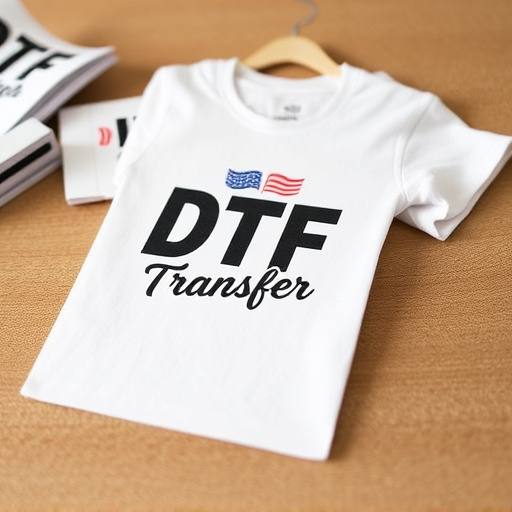Direct-to-Film (DTF) printing offers a revolutionary technology for creating top-quality, durable prints directly onto film or flexible materials. Its streamlined process, utilizing specialized inks, eliminates the need for lamination, making it fast, reliable, and visually striking for various applications like advertising banners, point-of-sale displays, and custom product labels. DTF printing is a cost-effective solution for resellers and SMEs, eliminating traditional printing overheads while ensuring exceptional image quality and color accuracy. With its versatility, DTF printing is transforming industries from retail to fashion, packaging, and event merchandising, promising further innovations in production speed, resolution, and material compatibility.
“Direct-to-film (DTF) transfers are revolutionizing how resellers and businesses approach printing. This cutting-edge technology allows for high-quality, on-demand printing directly onto film, streamlining production processes. In this comprehensive guide, we’ll explore the benefits of DTF for various industries, from photography to advertising. Learn about the simple process, from upload to final prints, and discover how to choose the best vendor for top-tier results. We’ll also delve into popular use cases and future trends shaping the evolving landscape of DTF printing.”
- Understanding Direct-to-Film (DTF) Transfers: A Simple Overview
- Benefits of DTF Transfer for Resellers and Businesses
- The Process: From Upload to Final DTF Prints
- Choosing the Right Vendor for High-Quality DTF Transfer Services
- Popular Use Cases for DTF Printing in Various Industries
- Future Trends: Evolution of DTF Technology
Understanding Direct-to-Film (DTF) Transfers: A Simple Overview
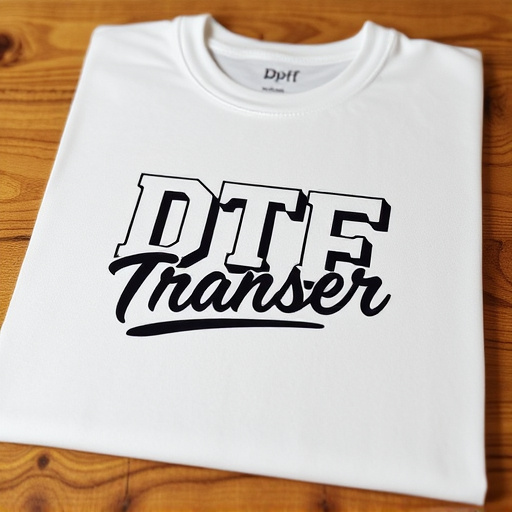
Direct-to-Film (DTF) transfers are a cutting-edge printing technology that allows for the creation of high-quality, durable prints directly onto film or other flexible materials. This innovative process streamlines the production of custom graphics, making it an attractive option for businesses and resellers seeking efficient and versatile print solutions. DTF Printing offers a range of benefits, from vibrant color accuracy to exceptional durability, ensuring that printed images maintain their integrity even in challenging environments.
The simplicity of DTF lies in its direct application method. Instead of traditional printing techniques that rely on separate layers of ink and laminate, DTF transfers use specialized inks that bond directly to the substrate. This approach eliminates the need for lamination, resulting in prints that are both robust and cost-effective. Whether it’s for advertising banners, point-of-sale displays, or custom product labels, DTF Transfers provide a fast, reliable, and visually stunning solution, making them an indispensable tool for businesses aiming to create impactful visual content.
Benefits of DTF Transfer for Resellers and Businesses
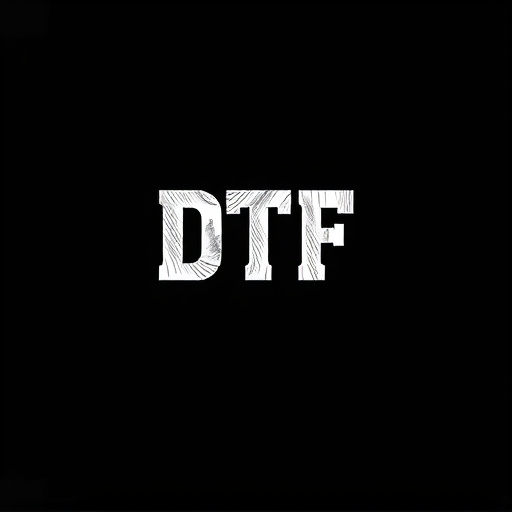
Direct-to-film (DTF) transfers offer a host of advantages for resellers and businesses looking to print custom designs on various materials, such as textiles, plastics, and metals. This innovative printing method streamlines production by eliminating the need for film positives or plates, significantly reducing setup time and costs. DTF Printing is particularly appealing for small-to-medium sized enterprises (SMEs) due to its accessibility and efficiency; it allows businesses to swiftly adapt to market demands and trends with minimal investment.
Moreover, DTF transfers deliver exceptional image quality and color accuracy, ensuring that resellers can offer high-end products without the usual overhead of traditional printing methods. This technology’s versatility enables businesses to print on a wide range of substrates, opening doors for creative applications in product branding, marketing campaigns, and personalized merchandise. By adopting DTF Printing, companies can enhance their competitive edge while providing clients with unique, visually stunning items that stand out in today’s crowded marketplace.
The Process: From Upload to Final DTF Prints

The process of achieving direct-to-film (DTF) transfers involves a seamless and efficient workflow designed to deliver high-quality prints quickly. It all begins when resellers or businesses upload their digital designs, which are then meticulously prepared for printing. Skilled technicians ensure the files meet the necessary specifications, including resolution and color accuracy, to guarantee optimal results. This preparation stage is crucial in achieving precise and vibrant DTF prints.
Once approved, the design is ready to be sent to the printer. The DTF transfer process involves applying the digital image directly onto a film, which serves as a master copy. This film is then used to create multiple prints, ensuring consistency and quality across all DTF products. After printing, the films undergo careful inspection to identify any imperfections. Finally, the approved films are cut and ready for packaging, ensuring that each reseller or business receives their custom-made DTF transfers promptly, allowing them to offer a diverse range of high-quality, on-demand printing services to their customers.
Choosing the Right Vendor for High-Quality DTF Transfer Services
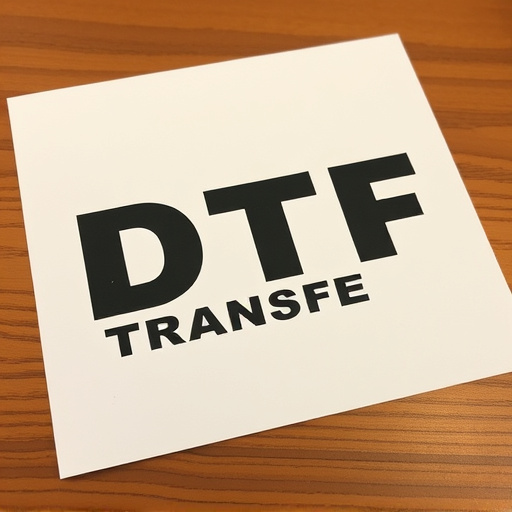
When selecting a vendor for high-quality DTF Transfer (Direct-to-Film) services, it’s crucial to consider several factors. Look for companies with a proven track record in DTF Printing, specializing in providing excellent prints for resellers and businesses. Experience matters; vendors who have been in the industry for years often possess advanced techniques and technologies to ensure precise and vibrant DTF Transfer results.
Additionally, verify their commitment to quality control. Reputable vendors implement rigorous testing procedures to guarantee consistent print quality. They should offer a range of options, from standard to high-resolution DTF Prints, catering to different client needs. Reliable customer support is also essential; prompt response times and knowledgeable staff can significantly enhance your overall experience.
Popular Use Cases for DTF Printing in Various Industries
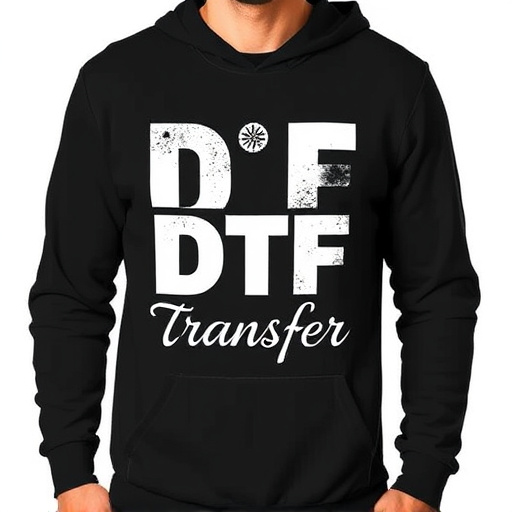
Direct-to-film (DTF) transfers and printing have found their way into numerous industries, revolutionizing how businesses create and distribute branded merchandise. In the retail sector, DTF is used to produce custom t-shirts, hoodies, and accessories with intricate designs, enabling small businesses to offer unique, personalized items at competitive prices. The fashion industry also leverages DTF for limited-edition clothing lines and collaborations, allowing designers to bring their visions to life swiftly.
Moreover, the packaging and labeling sector benefits from DTF’s ability to print high-quality labels and stickers directly onto various materials. This is particularly useful in food packaging, where custom designs and nutritional information can be precisely applied. Additionally, event organizers use DTF for creating promotional merchandise, such as lanyards, tote bags, and posters, ensuring a memorable experience for attendees. DTF Printing’s versatility extends to signage and display materials, making it a go-to solution for businesses seeking efficient, customizable marketing tools.
Future Trends: Evolution of DTF Technology

The future of direct-to-film (DTF) technology looks bright, with constant innovations pushing the boundaries of what’s possible in printing. As demand for high-quality, custom prints continues to grow, DTF transfers are poised to become even more versatile and efficient. Emerging trends suggest a move towards faster production times, improved image resolution, and expanded material compatibility, catering to diverse applications across various industries.
With advancements in inkjet technology, we can expect DTF printing to offer richer colors, finer details, and enhanced durability. This evolution will not only benefit resellers and businesses providing custom apparel and accessories but also expand into new markets like signage, decorations, and even 3D printing support materials. The ongoing development of eco-friendly inks further adds to the allure, aligning with growing sustainability concerns in the industry.




